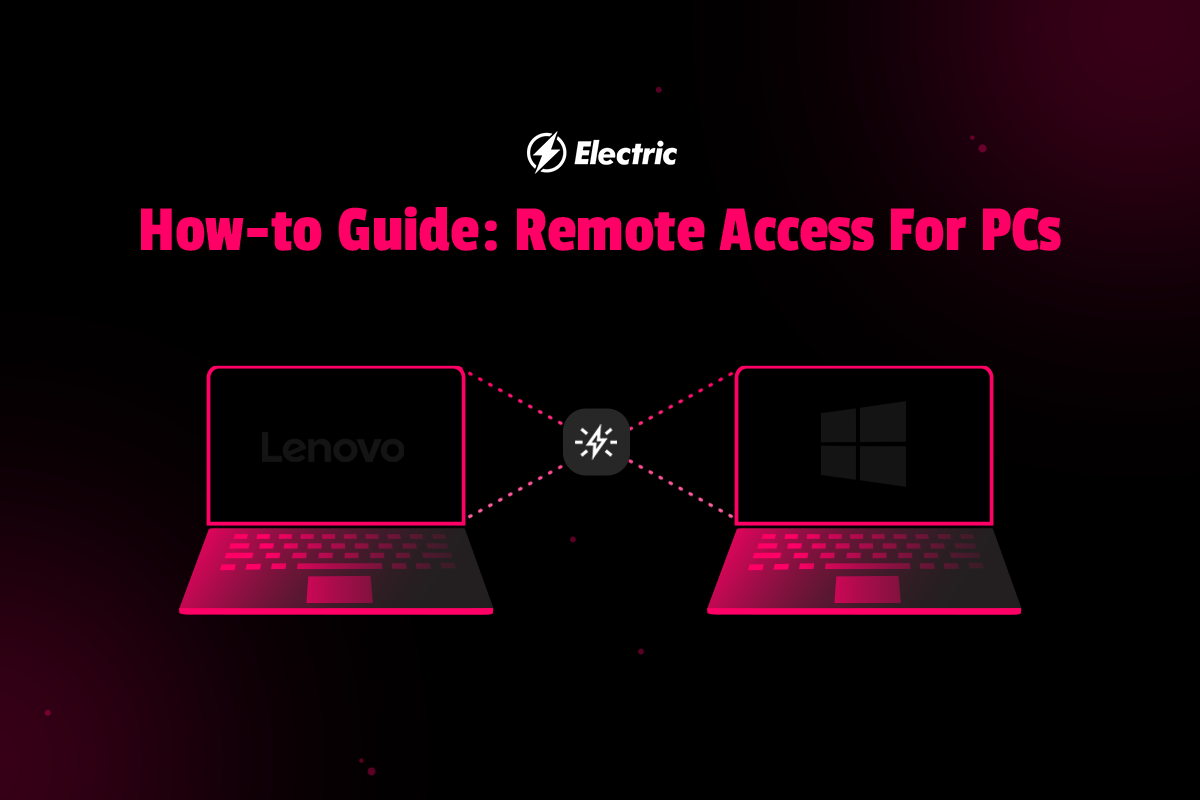
Many studies have shown that working remotely offers plenty of benefits. Working from home may help your concentration, relieve stress, and actually promote just as much, if not more, productivity than working at the office. Sounds great, right? It is, until you don’t have the right resources to actually do your work.
That’s why it’s handy to know how to gain remote access to your PC, and to have your remote IT team be able to access your PCs as well. Remote access allows you to obtain files or use applications that might be necessary for your day’s tasks. Before you start accessing your company’s devices or servers remotely, carefully review any personal device, cybersecurity, or work from home policies your employer may have. Staying up-to-date with such policies will help protect your business’ data, your clients’ data, and even your own data.
How to Configure a Windows PC for Remote Access
You can configure your Windows settings to allow remote access for PCs on the same network, but the steps may vary depending on what version of Windows you have. Also, not every version of Windows will allow Remote Desktop, including Starter and Home versions.
To enable remote desktop on your PC with Windows 10 Pro/Enterprise:
- Go to Settings under the Start menu
- Click on the Systems icon
- Slide to enable Remote Desktop.
- To help facilitate discoverability and outside connections, enable Show Settings
- Add permitted users by clicking Select users that can remotely access this PC
You will need to know the PC name in order to connect with it, which can be found under How to Connect to This PC. Remember, you should only allow remote desktop on secure networks to prevent the possibility of a security breach.
For earlier versions of Windows that allow Remote Desktop, download Microsoft Remote Desktop Assistant. This will help enable remote access and keep your PC awake so you can connect to it. It will also make sure that your firewall allows remote desktop connections.
Remote Access for PCs from a Mac
If you want to enable remote access for PC on a Mac, download Microsoft Remote Desktop from the Apple/iTunes store on your Mac. Then, set up your PC to accept remote connections.
To manually do this on Windows 10:
- Go to Settings under the Start menu
- Click on the Systems icon
- Click Remote Desktop from the side menu
- Slide to enable Remote Desktop
PCs will not allow remote connections when they are turned off or hibernating. To ensure your PC stays awake for remote access, set your hibernation settings to Never.
You can also use Remote Desktop Setup Wizard which will help walk you through all these steps automatically.
Troubleshooting Remote Access for PCs
If you’re having trouble gaining remote access to your PC, consider the following:
- Is the PC you’re trying to gain remote access to awake?
- Did you enter the right IP address or computer name?
- Are you on the same network as the other PC?
- Did you configure PC settings to allow outside connections?
- Does your version of Windows allow remote access?
Remote Access for PCs Makes Working From Home Easier
As more and more employees shift to remote and hybrid working models, businesses should consider allowing remote access to PCs in order to facilitate seamless productivity. To learn more about remote mobile device management, or to discuss your organization’s broader IT needs, get in touch. Electric provides real-time IT support and powers businesses to succeed in remote working environments.



